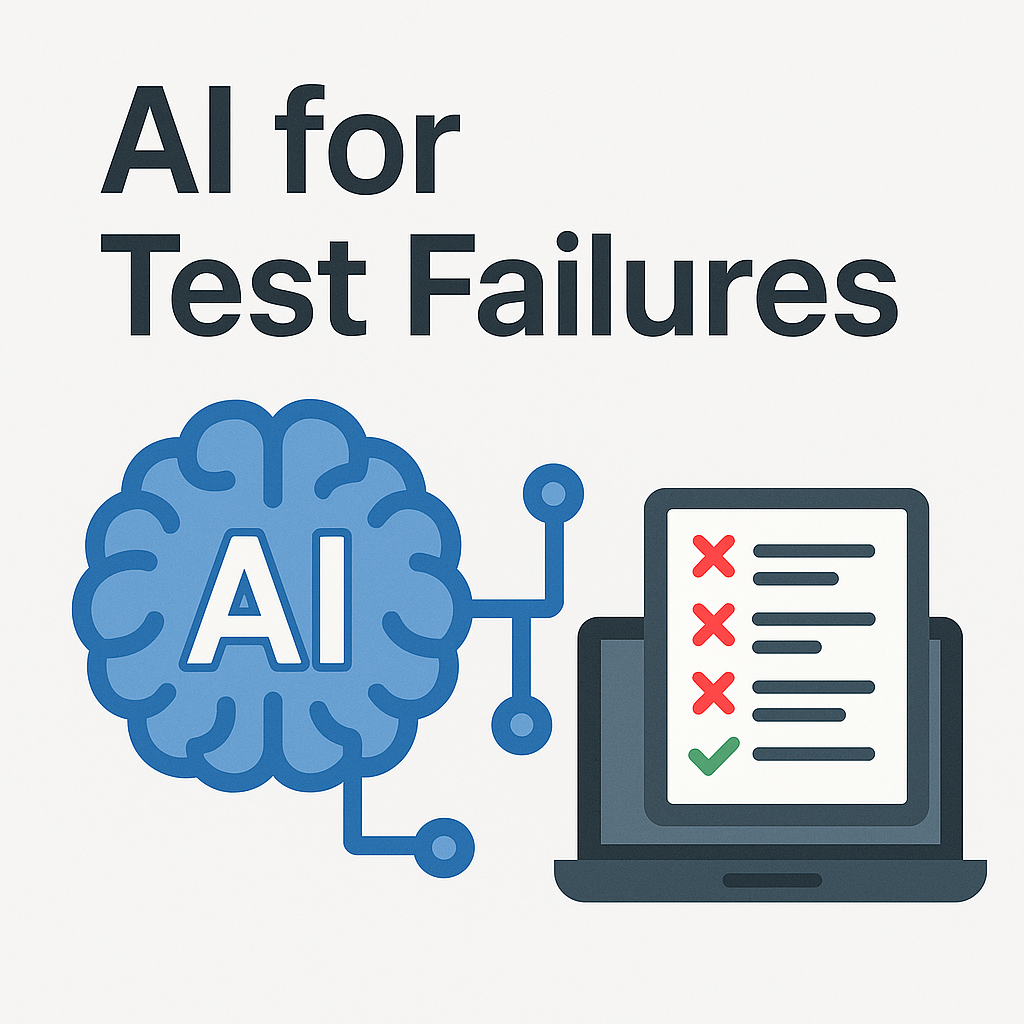In modern software projects, automated test suites often grow to include thousands of test cases, especially in CI/CD pipelines. While this ensures better coverage, it also leads to a new challenge: managing and triaging large volumes of test failures effectively.
This is where Artificial Intelligence (AI) comes in — offering intelligent classification, root cause grouping, and prioritization of failures, transforming how QA teams handle noisy test runs.
⚠️ The Problem: Noise and Delay in Large Test Suites
In enterprise-grade automation setups, it’s common for builds to have:
-
Hundreds of test failures, many due to flakiness or environmental issues.
-
False positives that consume valuable debugging time.
-
Delayed responses to actual critical issues.
Manual triage of test results is time-consuming and often misses patterns that machines can easily identify.
🤖 How AI Can Help
AI can be trained on historical test run data, logs, code changes, and issue tracking systems to intelligently:
1. Classify Failures
-
Categorize failures as:
-
Code-related
-
Infrastructure/environment issues
-
Test flakiness
-
Third-party dependency issues
-
-
Use natural language processing (NLP) to interpret logs and exception messages.
-
Implement clustering algorithms to group similar failure types.
2. Prioritize Failures
-
Rank issues based on:
-
Frequency across test runs
-
Impact on business-critical features
-
Association with recent code changes
-
History of causing production bugs
-
-
Integrate with version control and defect systems to correlate changes and defect trends.
🧪 Techniques & Tools in Action
| Technique | Role |
|---|---|
| Log Embedding + NLP Models | Understand and vectorize failure logs for clustering |
| Unsupervised ML (e.g., K-Means) | Group similar failures without predefined labels |
| Supervised Learning (e.g., SVM, XGBoost) | Classify failures based on labeled training data |
| Anomaly Detection | Flag new or rare failure types |
| Integration with Git & Jira | Pull context to better assign priority or root cause |
Example Stack:
-
Python + TensorFlow/PyTorch for ML models
-
Elasticsearch + Kibana for searchable logs and visualization
-
OpenAI/Gemini APIs for intelligent summarization and auto-tagging
🧩 Benefits of AI-Powered Failure Management
✅ Faster Root Cause Analysis – Reduce MTTR (Mean Time to Resolution)
✅ Early Detection of Flaky Tests – Automatically suggest quarantining or refactoring
✅ Less Manual Triage – QA teams focus on critical failures only
✅ Better Developer Productivity – Developers aren’t overwhelmed by non-actionable failures
✅ Trend Insights – Predict recurring issues and prevent them proactively
🛠 Real-World Use Case
Let’s say your nightly test suite runs 10,000+ tests. On a bad day, 120 tests fail. Instead of manually digging into logs:
-
AI clusters the failures into 5 major buckets based on log similarity.
-
Flags 2 of them as flaky (from past patterns), and 1 as critical (linked to a recent commit).
-
Sends a Slack/Teams summary to devs with root cause suggestions.
Boom 💥 — hours of debugging saved
🚀 Getting Started: Best Practices
-
Begin by collecting structured failure data from your test framework.
-
Store logs in a centralized location (e.g., Elasticsearch or log servers).
-
Start with unsupervised learning to find clusters in failures.
-
Gradually build labeled datasets for supervised models.
-
Use APIs like OpenAI to summarize logs or describe failure in plain English.
-
Integrate insights with CI tools like Jenkins, GitLab CI, CircleCI, etc.
🔮 Future of Test Failure Management
As test automation evolves, AI agents will not only classify failures but auto-heal them — modifying flaky waits, disabling unstable tests, or even rolling back faulty commits.
In short: AI is not just an assistant; it’s becoming a QA teammate.
Happy Learning!

